implementing a community garden in phases
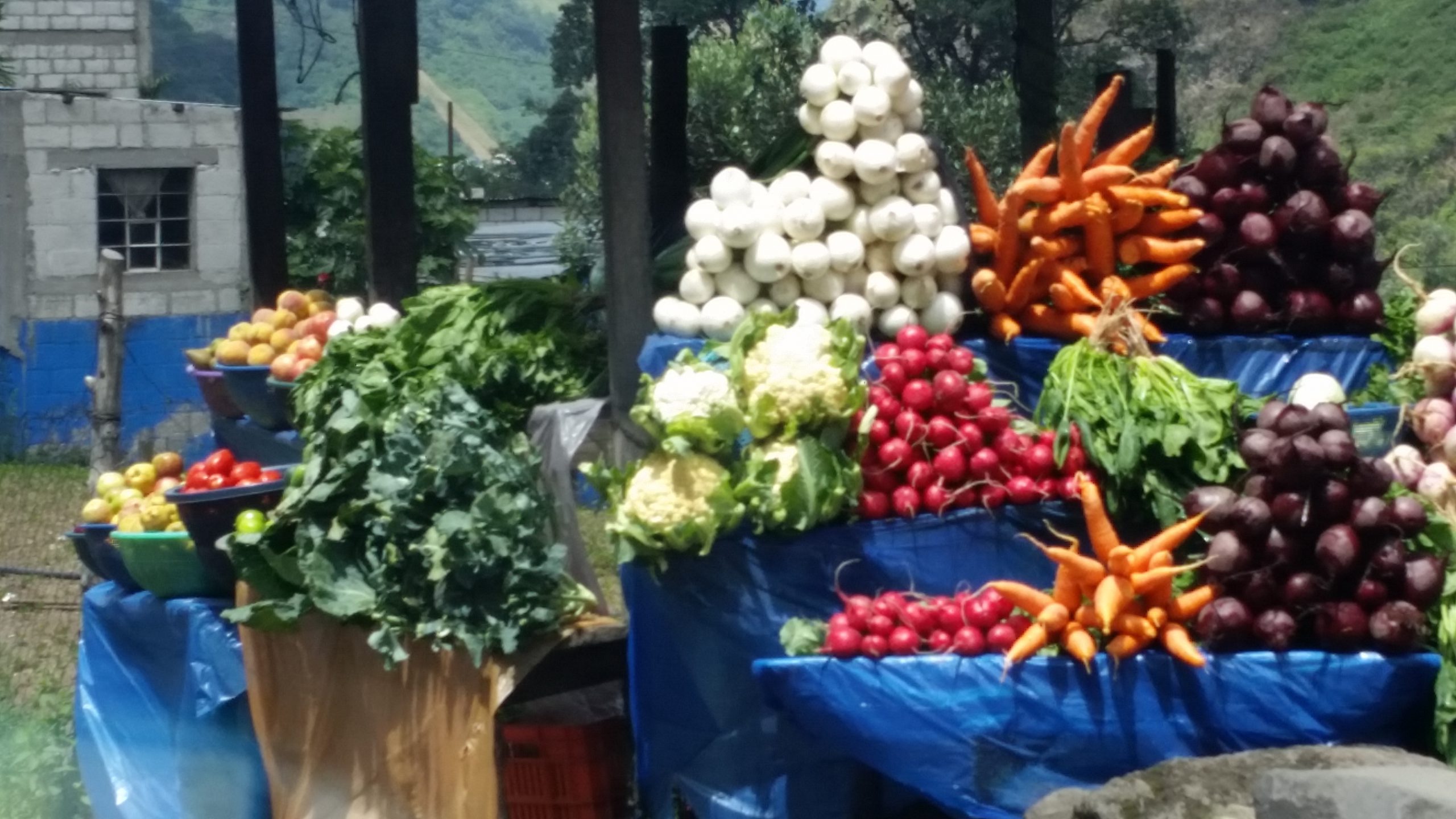
I’ve never been involved in planning or planting a community garden before. As I was growing up, however, my mom and Grandma loved to tend garden in a manageable rectangle in our back yard. They grew carrots and radishes, tomatoes and cucumbers, green beans and turnips, onions, leaf lettuce, and rhubarb. Those are the things I remember anyway.
Now, while faced with the joyous task of funding and implementing a community garden in Guatemala, I recall the ease with which my mom and Grandma hooked a hose up to the spigot on the side of our house, wheeled the hose cart out to the garden with oscillating sprinkler attachment, and watered the plot as needed.
In Guatemala, many homes do not have electricity, or running water, so instituting a project plan based on how it works in the US isn’t always possible. Such is the case with the Nuevo Reto Community Garden being planted in 2019. Nuevo Reto is a youth transition home located in Barcenas, Villa Nueva, Guatemala and were the recipients of our 2018 community library project. To strengthen the community even further, a community garden will:
- Broaden the outreach of their meal program
- Allow them to sell excess at the market
- Teach sustainability to the children of the community
- Involve the community in growing the food that feeds them
- Provide better nutrition
- Encourage pride with new skills
Before we begin to plant, however, there are several steps to be performed, and those steps will be made in phases.
Phase 1 — Preparing the Property and Installing the Water System
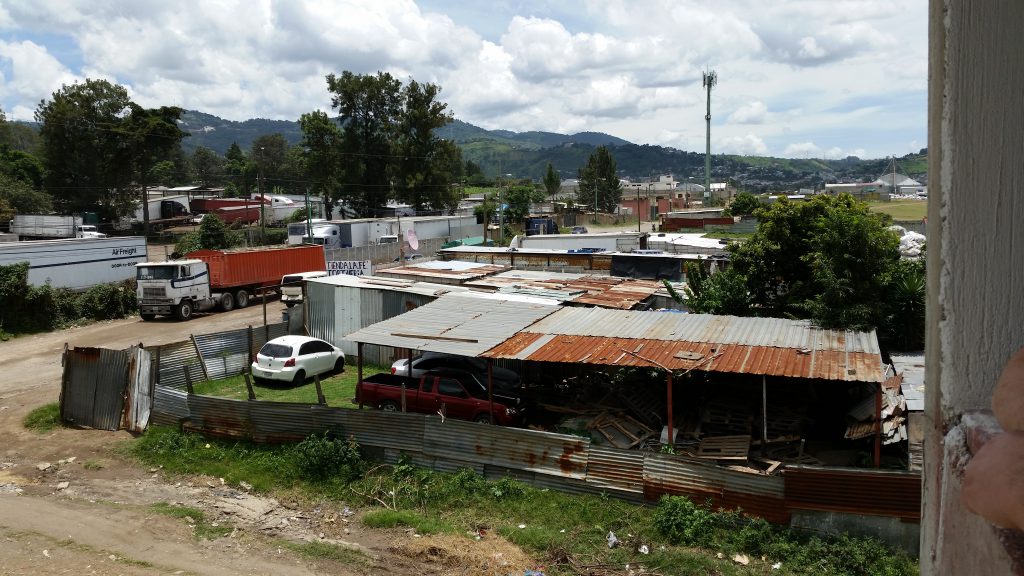 This is the property that will be the community garden. It is a 2400 sq. ft. piece of land that is currently used as a car parking and wood pallet storage area. (The wood pallets are used to make crafts in the carpentry training program.)
This is the property that will be the community garden. It is a 2400 sq. ft. piece of land that is currently used as a car parking and wood pallet storage area. (The wood pallets are used to make crafts in the carpentry training program.)
The land is loosely enclosed by a sheet metal fence. Part of phase 1 will include fortifying the metal fence with wood posts and adding barbed wire to the top to help discourage theft of food or chickens. It will also include taking down the carport and clearing the land of debris.
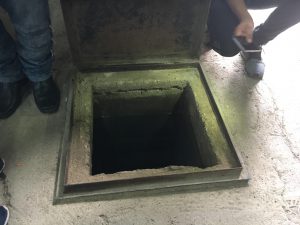 The most important (and expensive) part of phase 1 is the installation of the 3000 gallon underground concrete cistern and water pump. Although we considered the merits of a gravity-fed above-ground water supply system, Nuevo Reto chose the underground cistern because of their familiarity (this type of water storage tank is used at another property of theirs) and to keep it from being vandalized.
The most important (and expensive) part of phase 1 is the installation of the 3000 gallon underground concrete cistern and water pump. Although we considered the merits of a gravity-fed above-ground water supply system, Nuevo Reto chose the underground cistern because of their familiarity (this type of water storage tank is used at another property of theirs) and to keep it from being vandalized.
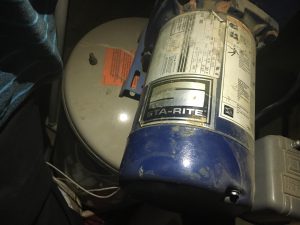
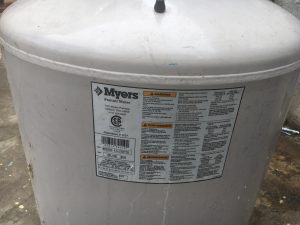 The 3000 gallon tank will be made of concrete and placed underground. An access panel is used to drop the water in when water is delivered during the dry season, which in Guatemala is roughly November through April. During rainy season (May through October) we will provide a rainwater collection system so that water delivery will not have to be scheduled as often!
The 3000 gallon tank will be made of concrete and placed underground. An access panel is used to drop the water in when water is delivered during the dry season, which in Guatemala is roughly November through April. During rainy season (May through October) we will provide a rainwater collection system so that water delivery will not have to be scheduled as often!
A water pump and tank such as the ones shown will be used to retrieve water from the underground cistern.
Phase 2 — Tilling the Land, Adding Topsoil and Infusing Fertilizer
Once the space is cleared and the water system is in place, it will be time to work the land. I had asked about renting a tiller, but I was told that the older boys in the program will use pickaxes and break up the land by hand. Then, a dump truck will deliver a load of topsoil and fertilizer would be mixed in as the topsoil is spread across the freshly hoed dirt. Finally, an “irrigation system” comprised of hoses will be put in place — ready for the planting of crops.
Phase 3 — Planting Crops and Building a Chicken Coop
Phase three most avails itself to community participation and seeing the results! In this phase, a tool shed and chicken coop will be built, crops will be planted, and chickens will be added! Initially, the staff at Nuevo Reto would like to plant a few herbs: cilantro, basil, mint and also some vegetables: carrots, potatoes, onions, radishes and perhaps a few other plants. When asked whether or not they would plant corn, the staple of the typical Guatemalan diet, they said they felt like they needed a larger space for that so would not include that in their garden.
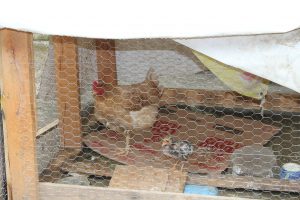 Nuevo Reto currently has a few pet chickens, but the new coop will be much larger and will house roughly 30 chickens — and companion roosters! The chickens we provide will be used to produce eggs as a source of protein, provide instant fertilizer for the ongoing growth of the garden, and when no longer egg-laying, will provide meat for special occasion meals.
Nuevo Reto currently has a few pet chickens, but the new coop will be much larger and will house roughly 30 chickens — and companion roosters! The chickens we provide will be used to produce eggs as a source of protein, provide instant fertilizer for the ongoing growth of the garden, and when no longer egg-laying, will provide meat for special occasion meals.
Our budget for this project
You’d think that a project like this would be much more, but joyfully our total anticipated expenses for the Nuevo Reto Community Garden is less than $5,000! With volunteer labor and construction of wood items being done by the youth in the carpentry program, there is substantial savings. Won’t you please help us fund this very worthy project? Here is a detailed breakdown of the expenses.
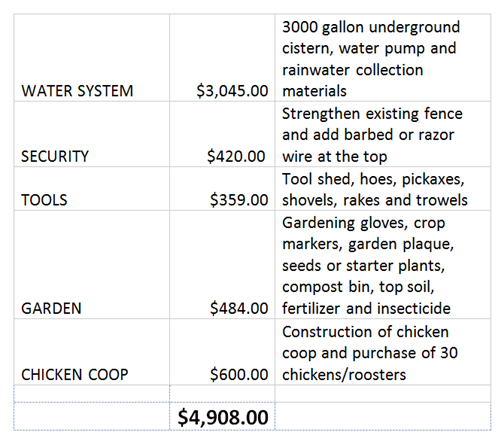

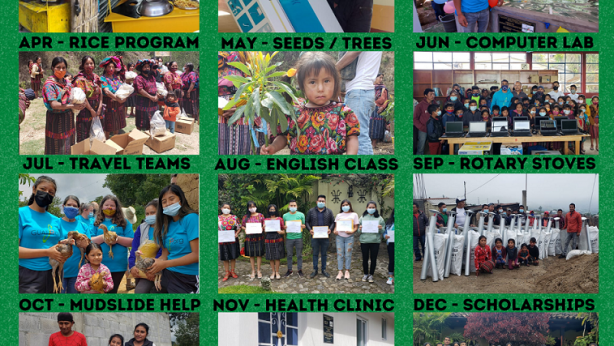
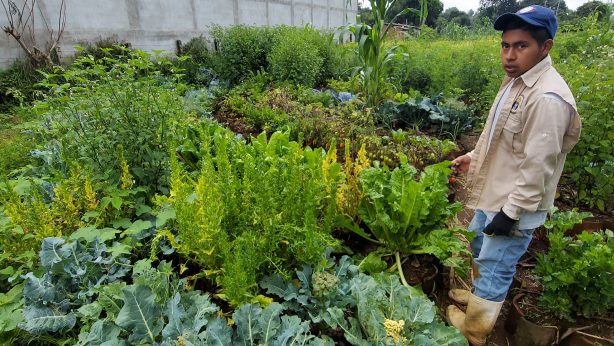
 The “right” opportunity arose when I learned about a travel opportunity for adoptive families which would include volunteer work and cultural sightseeing. Being members of that team had a profound impact on me, Lillian and Andrew. Not only were we able to make a real connection to our son’s birthplace, but we met incredibly warm and generous people, all of whom we now consider to be a part of our “family.” In addition to the volunteer work I shared with the Team, I also was able to “give back” by performing as my alter ego, “Farfel the Clown” at a barbecue for children of The Backyard School. It will remain one the proudest and happiest memories of my life.
The “right” opportunity arose when I learned about a travel opportunity for adoptive families which would include volunteer work and cultural sightseeing. Being members of that team had a profound impact on me, Lillian and Andrew. Not only were we able to make a real connection to our son’s birthplace, but we met incredibly warm and generous people, all of whom we now consider to be a part of our “family.” In addition to the volunteer work I shared with the Team, I also was able to “give back” by performing as my alter ego, “Farfel the Clown” at a barbecue for children of The Backyard School. It will remain one the proudest and happiest memories of my life.